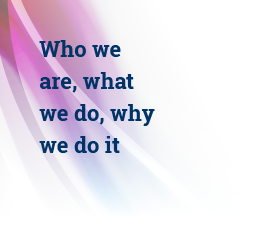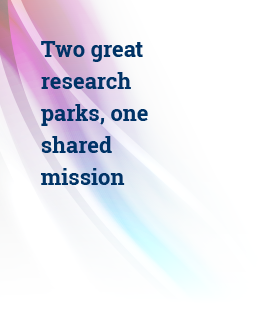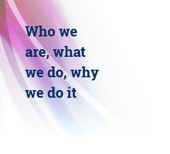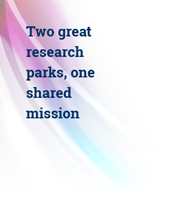TREND report’s 2nd Annual Issue Spotlighting Women in Real Estate
We are very proud to highlight twelve very accomplished women in this second issue focusing on Women in Real Estate. While last year’s issue highlighted women in CRE, we elected to expand the group this year to include two leaders in the home building industry—Amy McReynolds with KB Home and Anjela Salyer with Mattamy Homes. Also featured in this issue are Jodi Bain of The Bain Law Firm, Sara Baker of Baker, Peterson, Baker & Associates, Randi Dorman, Cynthia Hammond of Churchill Commercial Capital, Batoun Herrington of Harsch Investment Properties, Brenna Lacey of Volk Company, Nancy McClure of CBRE, Jeannie Nguyen, Robin Shambach and Carol Stewart.
This year’s real estate leaders were selected because of their professional accomplishments, and they contribute their time and knowledge to non-profit boards and councils. They represent a wide range of professions and opportunities within the real estate industry—home building, development, brokerage, architecture, appraisal, finance, property management, advocacy, legal, banking, and business development. I am grateful to them for sharing their personal and professional stories and their market insights. It is an honor to acknowledge the professional accomplishments of these women while also recognizing that there’s still more work to be done. The findings of CREW Network’s latest industry research paper, summarized on pages 2 and 3, found that women— especially women of color—have been negatively impacted by the pandemic. One in four women has considered stepping out or stepping back from the workplace. Women lost $800 billion USD in income in 2020, more than the combined GDP of 98 countries.
The number of women employed in the construction industry in the United States grew slightly in 2020, rising to 10.9% of the construction workforce, up from 10.3% in 2019, a recent NAHB analysis of labor force statistics from the Current Population Survey (CPS) showed. While the upward movement is positive, the construction industry as a whole faces an ongoing labor shortage. The majority of women in the industry are involved in administrative support, management, or business and financial operations, with the highest numbers—about 69%—in sales and office occupations. Only about 6% were involved in construction and maintenance occupations, where workers are needed most.
Get to know more about them in their own words on the following pages and join us in celebrating their accomplishments and contributions to the real estate industry in Southern Arizona.
Carol Stewart: Today’s Technology Playground
CAROL STEWART, a long-standing authority on research parks, is the Associate Vice President for Tech Parks Arizona at the University of Arizona. Carol Stewart leads the UA Tech Park at Rita Road and is developing the UA Tech Park at the Bridges. She is also president of the University of Arizona Center for Innovation, a technology business incubator network serving the University of Arizona, Tucson and the international community. Stewart is passionate about her community and serves as a champion in university-based economic development. She is a member of Southern Arizona Leadership Council, Flinn Foundation Steering Committee, a member of the Canadian Global Mentor Program and she also serves on the Board of Directors for Tucson Metro Chamber of Commerce, Pima County’s Workforce Investment Board, Sun Corridor Inc., Arizona Technology Council, Desert Angels, and is a member of the City of Tucson Mayor’s Economic Development Advisory Council. She also volunteers for the International Network of Science Parks and was recently appointed as the North American Division President.
How did you get started in your field?
The place is a major component of what we do every day at the UA Tech Park but it is so much bigger than just real estate. It was my combined business development, marketing, and corporate relations skills that lead a business colleague to submit my resume to the University of Waterloo (Ontario, Canada) to develop the new concept of a research & technology park project back in 2002. That crazy move led me to where I am today, a crazy Canuck in Tucson, Arizona.
How is the real estate industry the same/different for women today, than when you began your career?
The university research & technology park business was male-dominated when I entered it in 2002 with very little ethnic diversity. There were few female role models and the leadership positions had a death grip on their positions. To provide some scale, there are 170 research & technology parks in North America and approximately 700 worldwide. This is a small talent pool globally. Today, I sit among many other leading parks in the US with female and minority leaders and mentor many new women science park leaders in Africa, Brazil, and Canada.
What strides have been made in your area of the real estate industry?
Our industry tribe has expanded from traditional university research & technology parks to include incubators, accelerators, soft landing sites, innovation districts, and areas of innovation. We have a mantra: “You’ve seen one research park, you’ve seen one research park.” They are all different due to their alignment with the specializations of their institution and the region so competition among the 170 parks is rare.
Talk about your mentors.
I worked for Dennis Huber, VP of Administration & Finance for 13 years at the University of Waterloo after leaving a frenzied ride at a tech company for eight years. Dennis is one of the most honest, authentic, and ethical business professionals I have had the pleasure of working for and through observation and collaboration he propelled my career without ever being conscious of it or taking credit. At the same time working with David Johnston, fifth President of the institution (the R+T Park’s namesake), it was a joy to close business alongside a Canadian national treasure (28th Governor-General).
What are you seeing in your field/the market today?
Nearing the end of my third year in Tucson, with a global pandemic thrown into the mix, I am seeing the potential I saw back in late 2018 when I was considering this role, finally coming together. The alignment of all the partners in the innovation continuum supporting post-secondary and the science & tech community results in less confusion, more organization, and a collective spirit among the entities. Startups, small and medium-sized businesses, and corporations are looking to Southern Arizona with a new lens to expand or relocate, 80% of the prospects we’ve been working with for Tech Parks Arizona are from outside the state. Now is Arizona’s time to shine.
The future?
Tech Parks Arizona is a University of Arizona department comprised of multiple components all with a priority of supporting the research, outreach, innovation and land grant missions of the UArizona with the highest and best use focus of the Arizona Board of Regents (ABOR) assets. University-based economic development and economic gardening are strategies that scale regional economies, this is where we support the innovation mission of the University through our efforts at the UA Center for Innovation incubator and providing a “place” for those companies to grow and expand in world-class facilities.
Read the Original TREND Report aRticle by Lucinda Smedley Here















